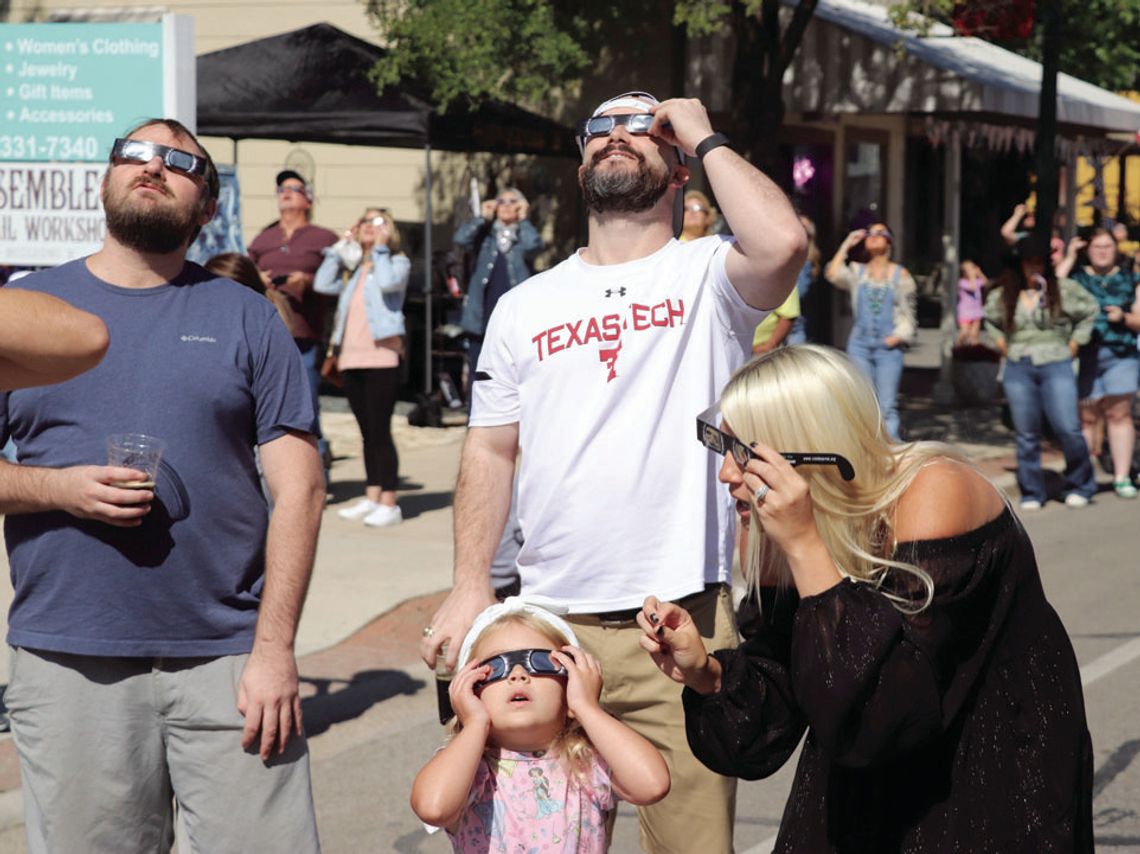For more than two hours Monday, Boerne residents and visitors will have their eyes cast to the skies, watching as the moon moves between the earth and the sun, creating four minutes of a total solar eclipse.
In Boerne, a partial eclipse starts at 12:14 p.m. when the moon begins its trek to blot out the sun. Totality begins at 1:32 p.m. and will last until just past 1:36 p.m. The eclipse ends at 2:55 p.m. when the moon completes its path. Dr. Beverly Johnson of Boerne Vision Center reminds people to understand precisely when they can remove their solar eclipse eyewear, when to put them back on — and what might happen if they don’t.
The riskiest moments, Johnson said, are the partial eclipse phases before and after totality, when the moon hasn’t quite as it was fully covered the sun.
“During totality, when it gets completely dark, you can look at the sun with your naked eye,” Johnson said. “But people get excited — I don’t blame them — and may take off their eclipse glasses too early or put them on too late.”
The sun’s intense rays, even during an eclipse, can cause serious damage to your eyes. Damage occurs, she said, when people underestimate the sun, thinking that an eclipse blocks enough of its light for it to be safe to view. Solar radiation remains dangerous even during an eclipse.
Exposing your eyes to the sun without proper eye protection during a solar eclipse can cause “eclipse blindness” or retinal burns, also known as solar retinopathy. This exposure to the light can cause damage or even destroy cells in the retina.
“This damage can be temporary or permanent and occurs with no pain,” Johnson said. “It can take anywhere from a few hours to a few days after viewing the solar eclipse to realize the damage that has occurred.”
Solar eclipse glasses are being handed out or sold at outlets throughout town. Johnson said to make sure they meet safety requirements and are manufactured with the ISO 12312-2 standard. “Look for ISO standard labeling when looking for solar eclipse glasses and purchase them from a trusted source,” she said.
“You can wear your eclipse glasses over or under your normal glasses. But do not look at the eclipse with your sunglasses, even if it is polarized,” she said.
“We treated a few cases after the first (annular) eclipse; luckily, they made a full recovery with the proper treatment,” she said. “But the retinal damage can be permanent as well.”
To take photos or videos of the eclipse, Johnson said to place eclipse glasses in front of your smart phone’s camera. “But remember,” she said, “do not view an eclipse through your smartphone, through binoculars or through regular sunglasses. You should be wearing eclipse glasses as well.”
“You might need two eclipse glasses if you want to take a photo and see it yourself,” she added.









Comment
Comments